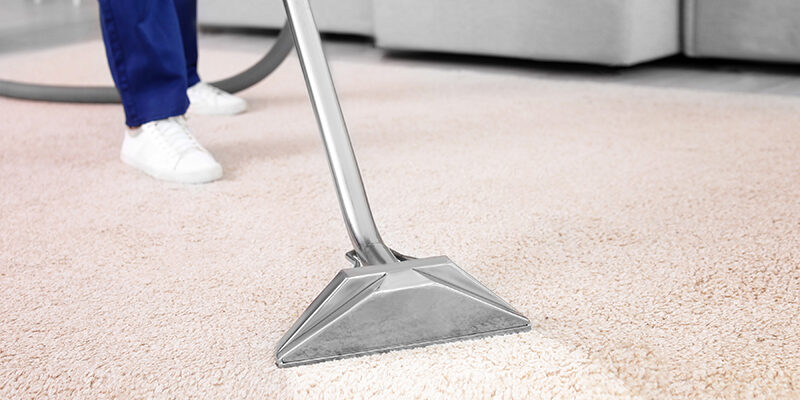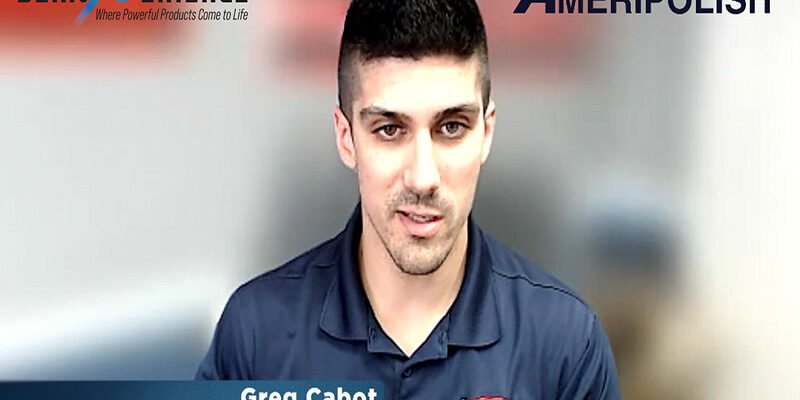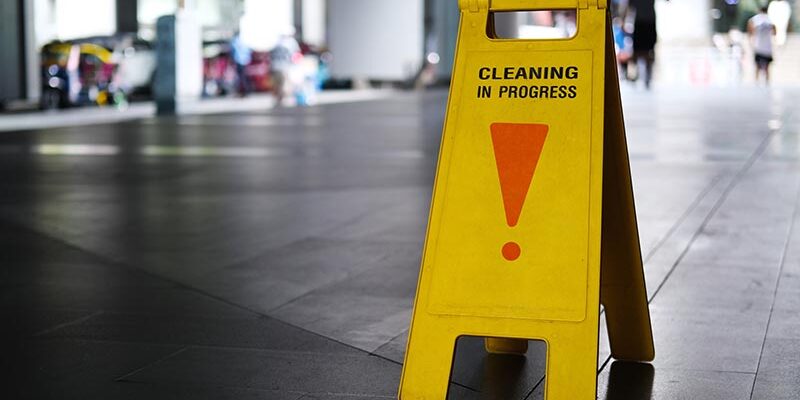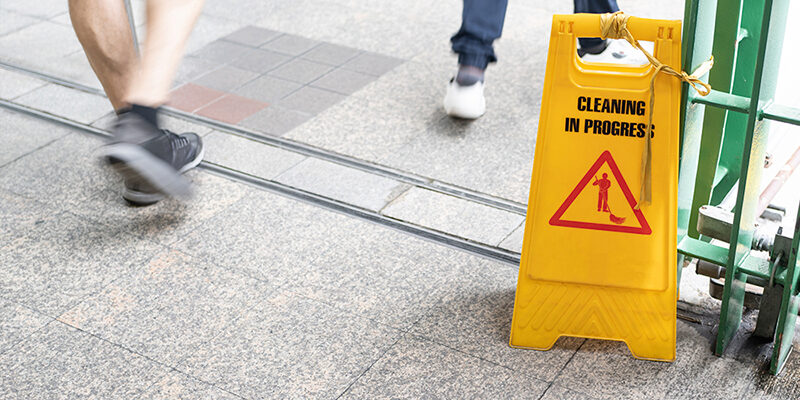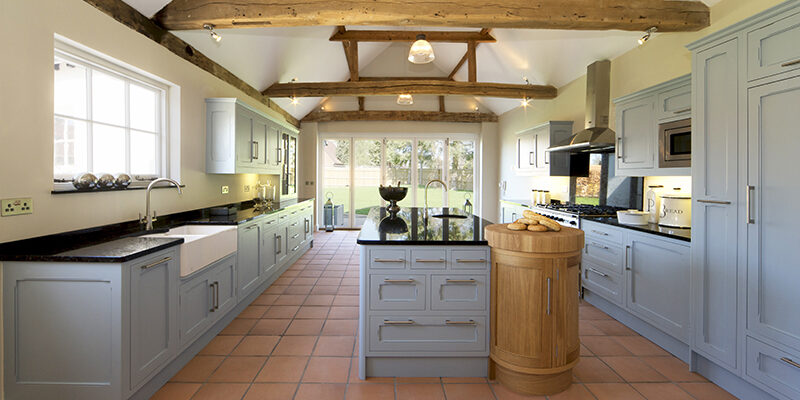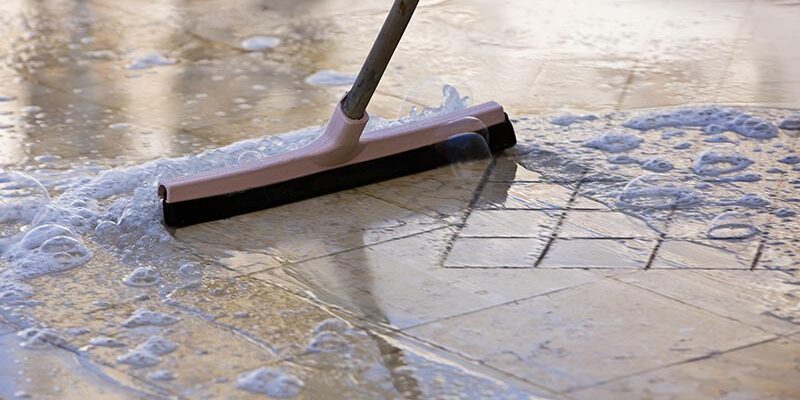A Walk Through Hard Flooring Trends
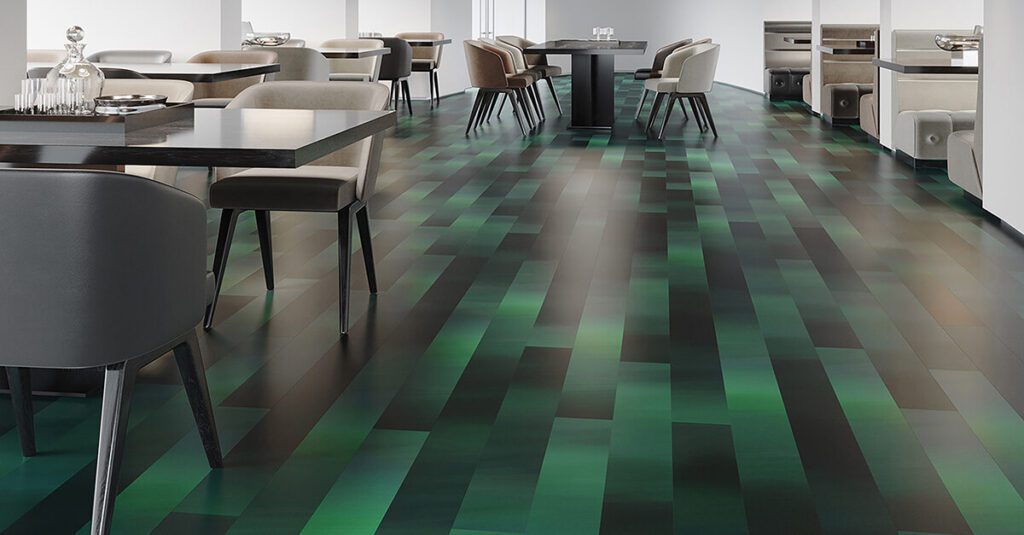
Enter a commercial or public building, and look down at the floor. Whether you are in an office complex, a retail store, a school, or a medical building, most likely you will see some type of hard flooring.
“The drift to hard-surface flooring has been pretty aggressive over the past decade,” said Jim Mannes, national director of Shaw Total Care. Bill Luallen, vice president and technical director of XL North, concurs. “The use of hard flooring has exploded in the last few years, especially when you consider that, about 25 years ago, carpet was the predominate flooring in many buildings,” he said.
Resilient flooring, polished concrete, and ceramic tile are among the most common types of hard floors found in nonresidential buildings. There are so many options, it’s easy to become overwhelmed when it’s time to replace flooring. Making an educated choice goes beyond how the floor looks. You will need to consider whether its strengths, weaknesses, and upkeep requirements make sense for your building.
Rely on resilience
Found in both residential and commercial buildings, resilient flooring is a popular choice due to its variety of styles and ease of upkeep. Resilient flooring can be described as flooring that is not made of textile, wood, stone, ceramic, or concrete. Luxury vinyl tile (LVT) tends to be a top choice, but other resilient options are gaining popularity.
“LVT has really exploded in the flooring marketplace; however, we do see rubber making great strides, both textured and smooth, and we see woven vinyl,” said Luallen. “We also see linoleum making a comeback. It has a green story, which holds a lot of value in the marketplace.”
With a variety of resilient flooring options available, you’ll need to consider the pros and cons to decide which is the best fit for your facility.
LVT
If it looks like wood but isn’t wood, it’s probably LVT. LVT’s popularity started out in medical and assisted-living facilities, but now you will also see it in in various public and commercial buildings such as schools and office suites. This manufactured flooring features an image, most commonly of wood, covered by a protective layer. “You can take a picture of anything and make it flooring. The creativity is endless,” said Luallen. “From grass and rock pebbles to street signs, if you can imagine it, it can be created into a flooring.”
Pros: An affordable, easy-to-install flooring, LVT features a factory-applied urethane coating for durability. It does need regular maintenance, but cleaning crews should be able to keep it looking good with routine vacuuming, dust mopping, and damp mopping. There is no need to strip and reapply coatings, unless the flooring becomes damaged.
Cons: As LVT is made up of layers, eventually the protective top layer will become scratched or damaged. You will need to renovate it by abrading the damaged surface, then applying either an acrylic finish or a new urethane coating.
Rubber
Not long ago, rubber flooring was only found in athletic facilities and stairwells, Luallen said. Now this flooring is used in public spaces, such a lobbies, and is popular in schools and hospitals.
Pros: Rubber flooring offers multiple benefits. It is comfortable to walk on and muffles sounds. It does not require any type of finish—just regular dusting, mopping, and a periodic scrub, either by hand or with an automatic scrubber. “Rubber is pretty indestructible,” said Luallen, explaining it is the same product all the way through, unlike LVT, which as a layered flooring shows scratches much easier. “Rubber is more forgiving and reacts well to deep cleaning.”
Cons: Rubber flooring’s surface is a bit more tactile than other flooring options, allowing soil to possibly build up if you are not prompt in cleaning it. Rubber flooring also is pH sensitive, so you can’t use high alkaline products on it, such as degreasers.
Linoleum
This flooring has been around for more than 100 years and is commonly seen in hospitals, schools—“really everywhere,” Luallen said.
Pros: Linoleum is made of natural products, including wood flour, cork powder, linseed oil, and rosin. “It’s a great green product,” Luallen said. It has a factory-applied urethane coating, does not require a stripping and finishing cycle, and can feature unique designs.
Cons: Linoleum is not only pH sensitive, it is moisture sensitive. So, it would not work well in damp areas such as restrooms or basements.
Miscellaneous resilient flooring
Other types of resilient flooring include woven vinyl, cork, and solid vinyl tile (SVT).
Pros: These flooring types are affordable and will wear well if maintained properly.
Cons: Although SVT is similar to LVT, it is a more homogenous product, which means it looks like traditional tile without the fancy design options. Cork is very sensitive to moisture, so take care not to get it too wet when maintaining it. Woven vinyl needs brush agitation to remove the dirt since it is a textured floor.
Customize with concrete
If concrete has you thinking about old basement and garage floors, think again. “When we densify and polish concrete, we can make it look better than any stone floor you can imagine, even polished marble,” said Jim Varnell, a technical sales specialist with Curecrete Distribution.
Polished concrete flooring has grown tremendously in popularity since the early 2010s, according to Greg Cabot, sales and marketing manager of Ameripolish. A growth forecast from MarketsandMarkets predicts the polished concrete market will grow from US$2.2 billion in 2020 to $3 billion by 2025.
You will see polished concrete flooring in large warehouses, big box stores, sports arenas, convention centers, museums, and universities—but also in high-end boutique stores and lofts. It is an economical and environment choice, because you’re not bringing in any new materials that might contain fumes or other hazards from volatile organic compounds (VOCs).
“We don’t have to bring anything to the party, the concrete is already there,” said Varnell. “We just grind it and polish it.”
Pros: Both Varnell and Cabot list low maintenance and high versatility among concrete’s benefits. “It’s very customizable as far as colors, stains, logos, the level of shine, and aggregate exposure,” Cabot said. “Concrete really could be for anybody.”
The level of grinding and polishing you choose will determine some of the floor’s character. Grinding the concrete low will expose more aggregate (you can add colored aggregate to make the floor stand out), while higher grinding will result in a more uniform look. You can choose a matte finish or a high-gloss finish, which results in a reflective shine that brightens the environment. Polished concrete holds up well to heavy foot traffic and is dust free, which is good for air quality.
Cons: Watch for stains. “People think, ‘oh, it’s concrete, you can drop anything on it,’” Cabot said. “But concrete is porous and will absorb liquids and stain if you don’t clean up spills right away.”
Varnell advises that you avoid using acidic or high-alkaline detergents on concrete, and not assume that concrete flooring is a good option for all building areas. “Polished concrete does not do well in an acidic environment, so it would not be good for public restrooms, underneath a urinal,” he said.
Before hiring experts to polish your concrete floor, let them know the type of traffic and products the floor will be exposed to. That way they will know the proper stain guard to apply. “We do this for grocery aisles, for instance, with mustard and vinegar and in the pickle aisle,” Varnell said. “The guard is a topical acrylic coating that will give you a bit of leeway before you can get there and mop up the stain.”
Once the concrete is sealed against stains, perform daily maintenance such as mopping by hand or with an automatic scrubber. Varnell and Cabot recommend asking the manufacturer of the stain protectant for advice on which cleaning chemicals to use, as well as the correct scrubber pad, such as one embedded with the proper diamond grit.
Go classic with ceramic
Ceramic tile offers a recognizable and very desired visual. It is popular in heavy-traffic areas, hallways, entry ways, hospitality venues, reception lobbies, and food-service areas. “By and large, when you see ceramic tile, it will be front and center—often when you enter the door to a building and in areas where people congregate,” Mannes said.
Pros: Ceramic floors not only look good, they can take a lot of abuse and are resistant to many cleaning chemistries. Although they require a higher capital investment, ceramic floors are among the longest-lasting flooring choices, as long as you properly maintain them.
Cons: The main challenge with ceramic tile is not the tile itself, but with the grout. Mannes noted that that the grout is often darker in the middle of the floor, where people walk and track in debris via their shoes. The only way to remove this debris from the grout is to thoroughly wash—and thoroughly rinse—the floor using the proper cleaning agent. Mannes advises against using products that are advertised as “rinse-free.” “Cleaning agents do not just disappear, and they do what they are designed to do—attract soil,” Mannes said. “That’s why the final step is always rinsing, not only to remove the soil and debris on the floor, but also the cleaning chemistry used on it.”


